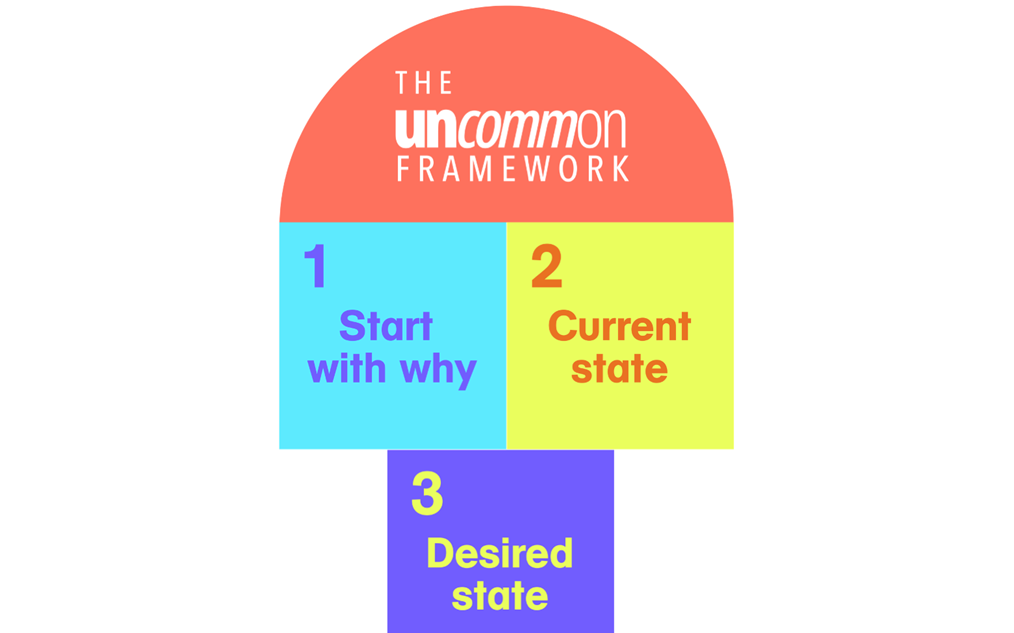Events have been and always will be the backbone of any association's reason for being. They deliver an array of important benefits that are the entire reason for most associations' existence: education, professional development, industry insights, building valuable connections and contacts up and down the value chain.
 But as we look to shake off the shadow of the last 2 years, we have an important opportunity to ‘hit reset’ on the traditional association event strategy.
But as we look to shake off the shadow of the last 2 years, we have an important opportunity to ‘hit reset’ on the traditional association event strategy.
Here are Uncommon Conference's top 5 things we know your members will be looking for in your 2022 event calendar:
1/ An event calendar, in the first instance
You do have one, right? Because if you don't, you’re setting yourself up for a lot of unnecessary headaches. But don't just dust off what you used to do, unless you are absolutely sure that's what your members are still looking for (which would be very surprising)!
Shifts in patterns around work from the office vs home, commuting and flexi hours are having a direct impact on in-person event participation. And not everyone will want to or in some cases be able to return to what was.
Time to get a blank sheet out and build afresh!
2/ A demonstration of how you've incorporated their input (Because you did ask them, right?)
If there's one truism in event strategy design, it's: know your audience. That doesn't come from a survey though. You need to have actual conversations.
Now is the perfect time to seek frank input from members on what they are prepared to commit to. Businesses seem busier than ever, trying to make up for the 'lost years'. That makes the proposition for attending events a lot different now. For a while there we had a captive audience, stuck at home and looking for any semblance of connection. No longer.
So, yes, it's time to hit the road (or the phone) and get in front of members again and ask the hard questions!
3/ A demonstration of what you've learned over the past two years
After all those great conversations, patterns will definitely emerge around what members want and need from you.
We're already seeing shifts in terms of what will get people out of their sweats and back to commuting when it comes to in-person events. The old offering of a prawn cocktail and a warm beer won't cut it any more!
They're looking to reconnect first and foremost, and yes, looking for fresh perspectives on how to get sh!t done. So now is not the time to overload your participants with endless 'expert' sessions. They definitely won't be excited at the prospect of being spoken at over the course of a dozen sessions in a dark, sleep inducing room. (After all, you could have just recorded the sessions and your members could have just viewed them in their own time.)
4/ A clear offering of optimism and hope
Which leads us nicely to our next point. We have a chance to finally do things 'better' when it comes to gathering our communities. Better in terms of the value members gain from joining. Better in terms of the impact events have on the individuals that join. Better in terms of the way they encourage, enlighten and inspire. We all need a good dose of optimism to take us through these ever-evolving weeks and months.
Will you take up the challenge?
5/ The ratio of in-person to virtual events
You probably noticed we haven't mentioned event format much. That's because it's always secondary to what we're hoping to achieve from a gathering. That said, it's probably time to state the obvious: virtual events are here to stay. And for good reason.
There was a serious disconnect between what was promised and what was gained from joining events that involved mostly one-way transmission of information. Everyone wins by hosting those online - no commute, no great expense, easier to take notes etc etc.
It's now time to think about the different audiences an in-person vs virtual offering might satisfy. How? Go back to your research to unpack what your members need most from you. If it's education-heavy, then the answer is obvious: stick with digital. But if it's connections and contacts and inspiration they seek, you're going to want to design something a lot more participant-led and engaging, with lots of opportunities to discuss, debate and decide.
Which just so happens to be what Uncommon Conferences specialises in. Say hello@uncommonconferences.com if you're ready to take your events to the next level!